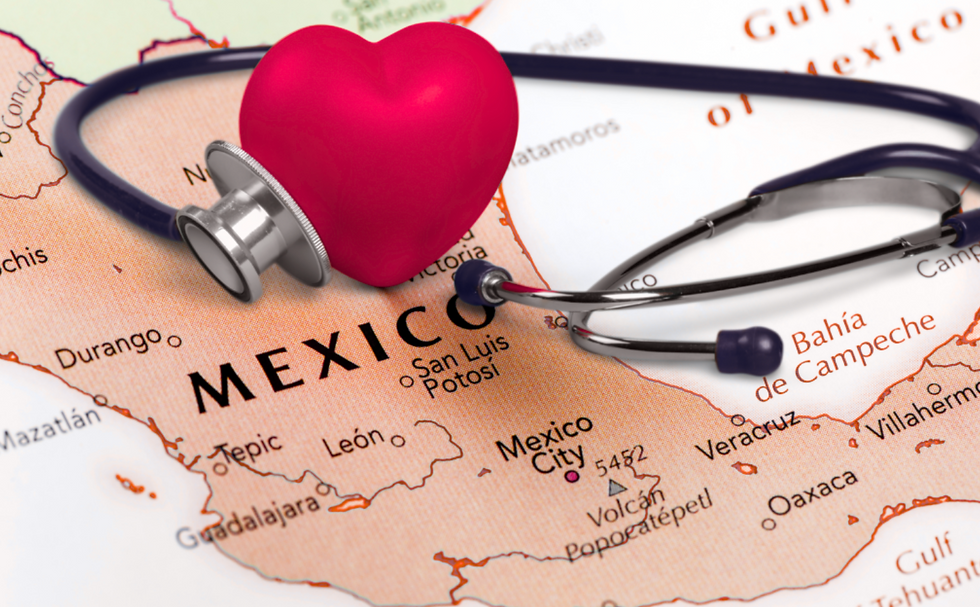Getting to Know Mexico's Healthcare System
- angela7173
- Jul 11
- 5 min read
Updated: Jul 16

Navigating health care in a new country can be overwhelming, especially if you’re doing it in your second language or during a health emergency. In Mexico, the structure, culture, and even communication styles of the health system may feel very different from what you’re used to. This post is here to help demystify the process.
A Quick Primer: How Health Care Works in Mexico
There are three primary ways that foreigners may access healthcare in Mexico:
Public Healthcare: The Instituto de Salud para el Bienestar (INSABI) has been phased out and replaced by other public healthcare programs. Foreign residents with a CURP may be able to access Mexico’s public health services through two main options, depending on their situation. However, information can regularly change and website information is not always up to date. Therefore, we highly encourage that you make an appointment or visit a center closest to you to inquire if you could be eligible for these services:
IMSS Bienestar - This program provides free healthcare to individuals who do not have any other form of social security (such as IMSS, ISSSTE, or PEMEX). It covers primary and secondary care, including general medicine, pediatrics, gynecology, and internal medicine. *Always check official government communications for updates on how this system might change.
Registration is in person only at a participating health center.
You must bring your CURP and, if applicable, a document confirming your lack of other health coverage.
Official info: registro.imssbienestar.gob.mx
IMSS - Salaried workers in Mexico are included in IMSS. If you are a self-employed urban worker (trabajador no asalariado del ámbito urbano), you may apply to enroll voluntarily in the regular IMSS system, which offers more comprehensive coverage (including some specialized care and medications).
This option requires monthly payments and can be done online.
Registration and details: imss.gob.mx/tramites/imss02030c
Travel Insurance: If you’re temporarily in Mexico, you may have travel insurance to cover you stay while you maintain primary residence elsewhere.
Private Insurance: Many foreigners and some Mexican nationals use private insurance, which typically works on a reimbursement model. That means you often pay out-of-pocket first and get reimbursed later.
Mexico has made major strides in healthcare coverage in recent years. Between 2006 and 2012, the country increased health insurance coverage by 50%, reducing access disparities across social groups (Urquieta-Salomón & Villarreal, 2016).
Still, many people remain uninsured or underinsured, and there are ongoing challenges with the performance or lack of resources within the public healthcare system.
Differences for Foreigners
Private Health Care Insurance Policies
Many private insurance policies only cover big accidents and hospital stays, rather than covering outpatient services such as optometry, dentistry, physiotherapy or psychology. They also often have a large deductible (e.g. $30,000m.n. - $50,000m.n.). With private insurance, you may need to save receipts, handle complex claim forms, and (often) wait on reimbursements. Fortunately, many insurance broker who sell the policy will also manage this process on your behalf once you have the policy.
Relationship Building as part of the Medical Service
Some cultural norms may also surprise you in the process of receiving medical care. Mexican providers often take a more personal approach - your doctor may greet you with a customary kiss on the check or a warm handshake. it’s not unusual for your doctor to ask about your family or your recent birthday party. Appointments may run long, not because of inefficiency but because time is seen more fluidly, and relationship-building is considered an important part of care. This may be a change for foreigners who come from healthcare systems where efficiency is more highly prioritized.
WhatsApp Communication with Health Professionals and Free Follow Ups
Another difference? It’s normal for doctors in Mexico to give out their WhatsApp number and text with you directly, emojis and all! For some foreigners, that can feel intimate or even like a boundary blur - but here, it’s often a sign of availability and care. It is very common that after paying for a consultation, you’ll be invited to follow up directly with the doctor via WhatsApp a few days or weeks afterwards.
Paternalistic Care Model “This is what you will/should take”
One study found that Mexican patients tend to prefer paternalistic doctors (those who are more directive) because they interpret that as a sign the doctor truly cares (Whitehead et al., 2022). For example, you may be given your prescription with medications, with little discussion (or no discussion) over the diagnoses, what the medications are, or options for treatment. Preference for this type of treatment among Mexican patients contrasted with U.S. patients in the study, who expected more autonomy and shared decision-making. Understanding this difference can help foreigners make sense of interactions that might initially feel overly authoritative, but are often intended as gestures of care and professionalism within the local cultural context.
Accessing Mental Health Services
Most private health insurance policies in Mexico do not cover psychology or psychotherapy services, so these are typically paid out-of-pocket. One exception is for foreigners with insurance from their home countries, which often includes coverage for mental health care under international or foreign medical benefits.
If you're unsure what your policy includes, it's worth calling your insurer to ask. Direct billing or “in-network” options with foreign insurers are rare - currently, Hola Therapy only offers direct billing with ASFPA (American Foreign Service Protective Association). However, we are also able to provide English-language receipts and documentation to support reimbursement claims.
On a positive note, many international insurers offer generous coverage, often reimbursing 90–100% of costs, and the claim process is generally straightforward.
Calling an Ambulance in an emergency
In Mexico, 911 is the national emergency number, and it does connect to ambulance services. However, it’s important to know that public ambulances are limited, especially in busy urban areas or at night. Wait times can be long - sometimes even several hours. Because of this, many locals and foreigners rely on private ambulance companies, which tend to respond more quickly. If you go this route, it’s essential to ensure the ambulance provider is legitimate, as there are unlicensed services that pose serious risks - including poor-quality care, inflated charges, and transport to substandard or non-reputable medical facilities.
Therefore, look for vehicles marked with proper medical insignia, staffed by trained paramedics, and affiliated with a known hospital or clinic. Another common recommendation is to get yourself to a hospital whenever this is possible, rather than waiting for an ambulance.
Be aware that private ambulances often charge out-of-pocket, so it’s wise to check your insurance policy in advance. If you’re living in Mexico long-term, it may be worth identifying a reputable private service near you ahead of time and saving their direct number in your phone.
Here are some other services that could be useful to have saved in your phone:
Organization / Institution | Phone Number(s) | Hours of Operation | Description |
LOCATEL – Mexico City | *0311 or 55-56-58-11-11 | 24/7 | Government-funded General helpline offering support for mental health crises, missing persons, legal guidance, and more. |
National Autonomous University of Mexico – Distance Psychological Support | 55-50-25-08-55 | Monday to Friday, ~9:00 AM – 6:00 PM, or 24/7 in cases of emergency. | Free remote psychological support with trained professionals. |
Metropolitan Autonomous University – Psychological Support Line | 55 25 55 80 92 55 58 04 64 44 55 39 42 03 39 | Monday to Friday, 9:00 AM – 5:00 PM | Phone and chat-based emotional support. |
988 Suicide & Crisis Lifeline | 24/7 | This can be accessed via calls from a US number. The online webchat can be accessed through a US IP address. |
*Note that the services in Mexico are operated in Spanish. The 988 line and webchat is operated in English.
Navigating New Healthcare Systems with Self-Compassion
Adjusting to a new health system is no small task. It’s okay if you feel frustrated or anxious about not knowing how things work, or if your expectations don’t match your experiences. These moments are stressful, especially when they involve your health or the health of someone you love.
Giving yourself grace, asking questions, and finding professionals who respect your background and values can make all the difference.




Comments